Optimising the efficiency of warehouse operations is of critical importance in a rapidly changing business landscape. As a vital link in the supply chain, warehouses have a profound impact on the overall profitability of a business.
Increased warehouse productivity can lead to reduced operational costs, improved customer satisfaction, and greater overall efficiency. In this blog, we will explore key steps to improve productivity in a warehouse setting.
Efficiency is about doing more with less, maximising resources to their fullest potential. By taking steps to streamline your warehouse operations, you can help your business grow and thrive. The process, while potentially challenging, can provide significant dividends in the long run.
Understanding Warehouse Operations
Warehouses are hubs of various operations including receiving, storage, picking, packing, and shipping. They deal with vast amounts of inventory, juggling diverse tasks, and managing numerous staff members.
However, productivity issues can arise from a multitude of factors including mismanaged inventories, inadequate equipment, poor layout, and untrained staff.
Understanding the importance of optimal warehouse efficiency can be the difference between a smooth-running operation and a chaotic, unproductive environment.
An efficient warehouse not only improves the bottom line but also contributes to better customer service by ensuring that goods are stored correctly, managed efficiently, and dispatched on time.
Evaluating Your Current Warehouse Processes
To improve productivity, the first step is to conduct a thorough evaluation of your current warehouse processes.
This assessment involves examining how goods are received, stored, picked, packed, and shipped. It is important to analyse the workflow, identify any existing bottlenecks, and pinpoint areas of potential improvement.
By establishing a clear understanding of your current warehouse operations, you can identify inefficiencies and strategise necessary changes.
Some common methods to assess your operations could be time and motion studies, workflow analysis, or leveraging warehouse management systems for data-driven insights.
Incorporating Lean Principles
Lean principles, originating from the Japanese manufacturing industry, have proven to be highly effective in enhancing productivity across different sectors, including warehouse operations. Concepts such as ‘5S’ (Sort, Set in Order, Shine, Standardise, Sustain) and ‘Just-in-Time’ (JIT) production can help eliminate waste, improve flow, and increase efficiency.
For instance, the ‘5S’ system can help organise the workplace, streamline work processes, and reduce time wasted on searching for items. On the other hand, the JIT approach aids in reducing inventory costs by ensuring materials are only supplied as they are needed in the production process.
Companies such as Toyota have successfully implemented these principles, resulting in significant efficiency gains.
Technology and Warehouse Productivity
Technology plays an increasingly important role in modern warehouse operations. Implementing technological solutions such as Warehouse Management Systems (WMS), RFID tagging, Barcode Scanning, Automation, and Artificial Intelligence (AI) can vastly improve productivity.
For example, a WMS can optimise inventory tracking, reduce errors in picking and packing, and improve overall warehouse management. Similarly, automation technologies can handle repetitive tasks, thereby reducing labour costs and human error.
Companies like Amazon have demonstrated the transformative impact of technology on warehouse operations, leading to improved efficiency and accuracy.
Staff Training and Development
A highly skilled and motivated workforce is essential for any productive warehouse. Training staff to operate new technologies, understand and apply lean principles, and manage inventory more effectively can greatly improve productivity.
Moreover, it is vital to maintain a cycle of continuous learning and skills development. This not only equips the staff to handle their tasks more efficiently but also helps in employee retention.
Companies that invest in their staff through regular training and development programmes often find that improved morale leads to higher productivity.
Implementing Effective Warehouse Layout and Design
The physical layout and design of a warehouse play a significant role in its overall efficiency. A well-planned warehouse design can facilitate a smooth flow of goods, minimise unnecessary movement, and increase picking accuracy.
Safety should be a top priority when designing the warehouse layout. Clear aisles, proper signage, and designated areas for specific operations can help prevent accidents and improve productivity. Implementing such changes can lead to a safer, more efficient working environment.
Inventory Management and Control
Effective inventory management is crucial for warehouse productivity. This includes implementing strategies such as First-In-First-Out (FIFO) or Last-In-First-Out (LIFO) to prevent stock obsolescence and optimise inventory turnover.
Additionally, cycle counting, which involves regularly counting a portion of your inventory, and regular auditing are fundamental for accurate inventory control.
Effective inventory management and control not only reduce carrying costs and losses from obsolete stock but also ensure that products are available when customers need them.
Continuous Monitoring and Improvement
To maintain and improve warehouse productivity, continuous monitoring of operations is essential. Key Performance Indicators (KPIs) such as order accuracy, inventory turnover, and picking efficiency can provide valuable insights into how well the warehouse is performing.
A culture of continuous improvement encourages staff to strive for better performance, find new ways to streamline operations, and contribute to the overall efficiency of the warehouse.
This mindset, combined with the effective use of KPIs, can lead to significant improvements in warehouse productivity.
Conclusion
Improving warehouse productivity involves a multifaceted approach, from evaluating current processes to incorporating lean principles, leveraging technology, developing staff skills, designing an effective layout, managing inventory, and continuously monitoring performance.
Each step plays a vital role in streamlining your warehouse operations and can lead to significant improvements in efficiency.
Take the opportunity to assess your warehouse operations and implement the necessary changes. Remember, a streamlined and efficient warehouse can contribute significantly to the success of your business, resulting in reduced operational costs, improved customer satisfaction, and overall business growth.
At Billingtons Safety Systems, we specialise in warehouse improvement and safety. Get in touch with us today.
